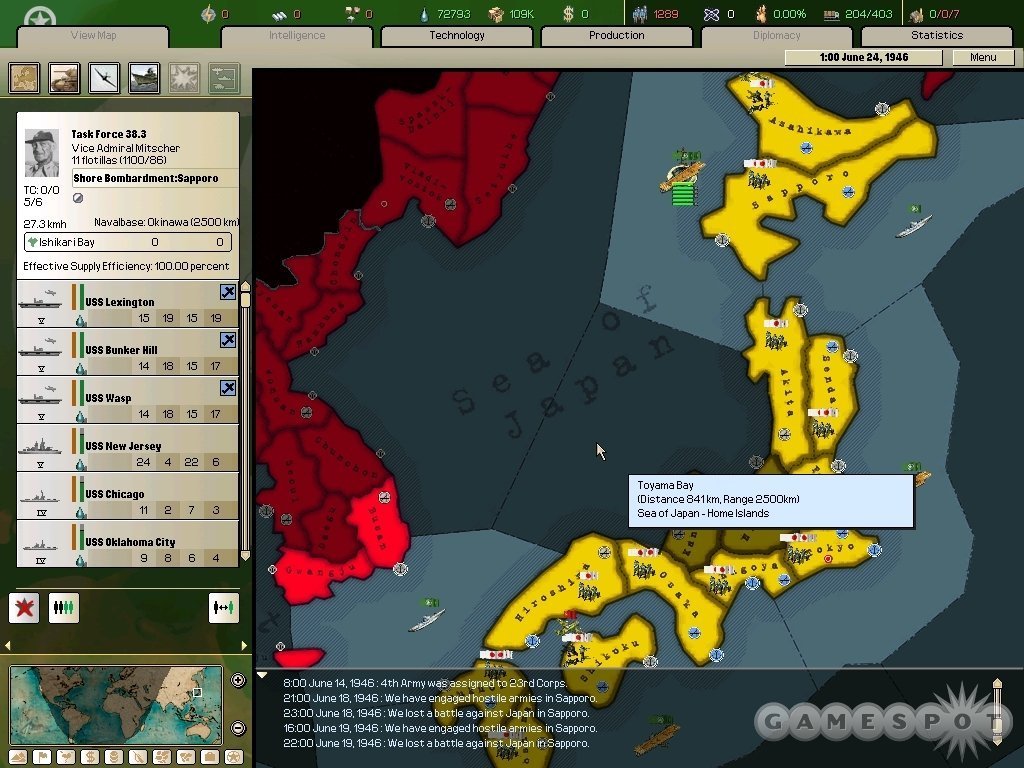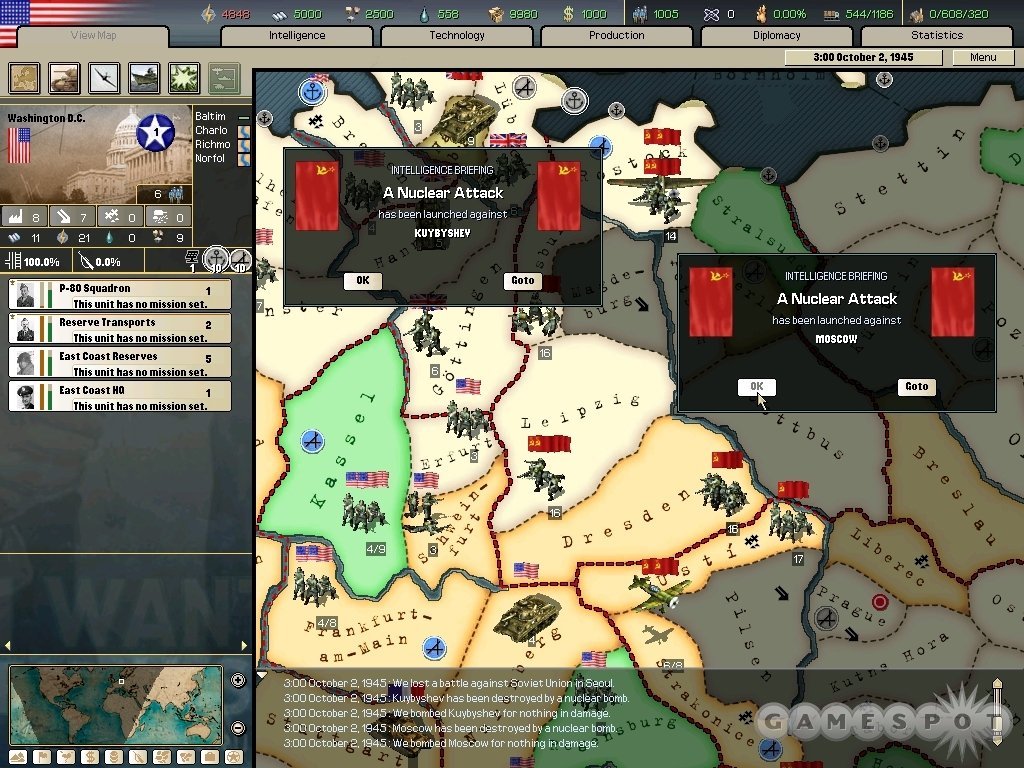Even though wondering "What if?" has always been a popular pastime for armchair generals, Paradox Interactive has stayed away from speculation. Franchises such as Europa Universalis and Hearts of Iron feature authenticity so precise that you often feel like you're paging through a textbook. Playing geopolitical sims such as these should earn you credit toward a BA in History due to such a rigid "just the facts, ma'am" design philosophy.

Until now, that is. Doomsday, a stand-alone expansion for World War II uber-simulation Hearts of Iron II, takes Paradox into the world of alternative history for the first time. And it succeeds in a big way, thanks to the seamless transition from a realistic depiction of the conflict between the Allies and the Axis to an imaginative look at how the tense early years of the Cold War could have unfolded. Gameplay feels too familiar to be entirely pleasing, especially if you've spent much of the past year running roughshod over Hitler or slapping around Stalin in the compulsively playable (well, once you ascended past the cliff-like learning curve) original game. But if you're looking for more of the same, this is a winning approach.
There aren't any surprises here. The look and feel of the expansion match the original game right down to the shrill musical score and the lame fixed resolution of 1024x768. Doomsday is a standard expansion with fairly standard accoutrements. It includes a new campaign, along with odds and ends such as updated units, a US/USSR invasion-of-Japan scenario (although it must be said that the Soviets don't seem to help all that much), and a scenario editor. The centerpiece is a revamped grand campaign that lets you set a starting point between 1936 and 1945, and play to January 1, 1954. Choose to start with the Doomsday scenario in October, 1945, and you come onboard as the Allies are forced to defend Western Europe against the swarming Red Army by nuking Moscow. Nothing like getting things going with a bang.
Moving the finish line into the 1950s redresses a problem with Hearts of Iron II. Earlier, campaigns ended abruptly too often. You'd be right in the middle of a big push into France or on the verge of finally deploying the A-bomb, and the game would wrap at the end of 1946 with a dissatisfying tallying of victory points. Wins seemed cheap at times, and losing could be really aggravating, particularly when the calendar, not the enemy, cut off your grand plan for world domination.
Games still end a little brusquely; New Year's Day in 1954 arrives all too soon. But the additional years typically provide enough time to bring the cataclysmic war in Western Europe to a gratifying climax. There isn't quite enough time to wrap things up on a global scale, however. You get a sense of the Cold War's early tension as the race to develop nuclear weapons heats up through the later 1940s and early 1950s, although games usually seem to end before a nation emerges as the clear winner or has at least thoroughly nuked rivals into the Stone Age. Even though an extra few years would have been nice, you don't find yourself thinking "I wonder what would happen six months from now?" nearly as much as before at the end of campaigns.
The additional seven years tacked on to Doomsday are tricked out with enough new units to enhance the feel that you're not quite playing Hearts of Iron II. Much of the advanced military hardware that characterized the Cold War is on offer here, including attack helicopters, nuclear submarines, H-bombs, ICBMs, surface-to-air missiles, advanced rocketry, jet aircraft, and so forth. If you could build it in the real world in the late 1940s and early 1950s, chances are you can research and build it here.
All of the new hardware is overshadowed by the mad rush to split the atom and build an arsenal of nukes, though. Just as in the real Cold War, nuclear power dominates the scene no matter how much in-game alliances and events differ from those in the history books. That said, it's not easy to go all Dr. Strangelove. You need to put serious effort into tech to develop the H-bomb and the ICBMs required to deliver it to enemy cities, and that can be nearly impossible while a conventional war is ravaging Europe and Asia.
Spend too much time on tech and not enough on production while guiding an Allied power such as the US or UK, and the massive Red Army could soon march into Paris. Conversely, while the Soviets can bypass production due to numerical superiority as the campaign gets started, they begin without nuclear technology and must race to acquire it before the clock runs out in 1953. In short, everything is balanced, and there are no simple answers to tactical questions.
Intelligence further adds to the Cold War atmosphere. Oddly omitted from the original Hearts of Iron II, spies play a huge role here. They are crucial when it comes to the nuclear race, as well-placed agents can steal the technology needed to provide an atomic edge. Spies are particularly vital for the Soviets, who need to deploy them to catch up with the Allied ability to make enemy cities glow in the dark.

But espionage isn't easy. Agents actively trying to steal tech, foment rebellion, sabotage industries, or assassinate enemy ministers are at great risk of being detected. The artificial intelligence does an impressive job picking off spies, so it is very difficult to play Julius and Ethel Rosenberg and gather information effectively. Spies can be sent in as sleepers in deep cover, but this limits the information provided, makes intel unreliable (an overrun Berlin taught us not to rely on sleeper intelligence about Soviet armor), and prevents you from pulling off major missions such as swiping tech blueprints.
Basically, if you want more Hearts of Iron II, Doomsday is a great bet. It feels a bit too much like its big brother, but all of the speculative history, nuclear tension, and Cold War spice make it a great addition to Paradox's stable of strategy games. It's also a great bargain when you consider the sheer amount of game you get here for less than $20 and the extra hours you'll get out of what modders will undoubtedly create with the scenario editor.